Behind the Scenes at the Museum: Optimizing Preservation Conditions
In 2018-2019, the Archives Centre and the Museum Storage Facility at Le Monastère des Augustines received financial assistance from the Department of Canadian Heritage’s Museum Assistance Program (MAP) to optimize storage conditions for collections and archives. Many storage structures were installed, which freed up space while improving the quality of the storage conditions.
Storage structures designed for the Archives Centre
In the Archives Centre, MAP helped to purchase mobile storage units. For example, a space formerly used as a safe now houses several boxes, thanks to these additions. The Centre’s second storeroom also benefited from these mobile units, as they are very practical and space saving. In the end, these shelves helped us store and additional 240 archive boxes from the monasteries of Chicoutimi and Roberval. Iron bookshelves were also purchased in order to properly store several hundred ancient books.
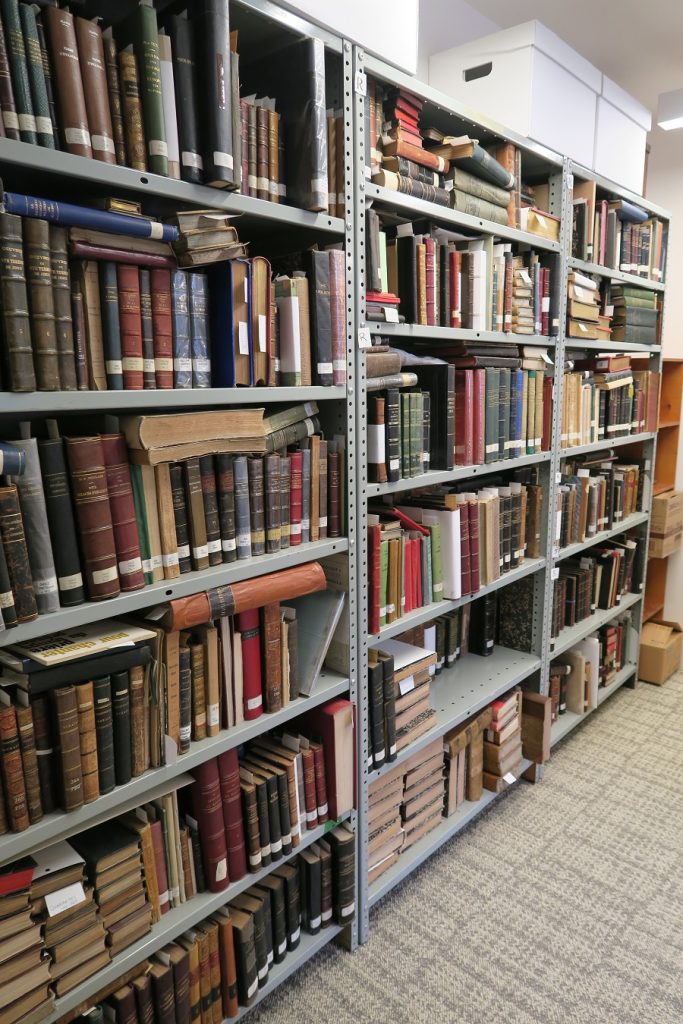
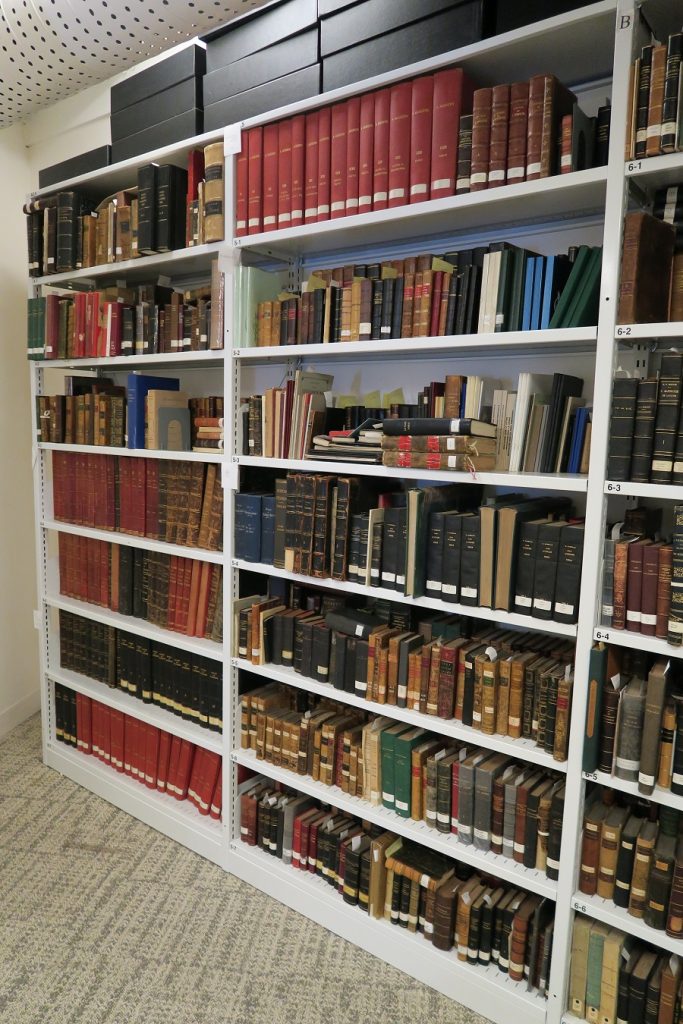
Furthermore, the addition of 36 slide out tray in the Archives Centre various shelving units facilitates efficient consultation documents stored in a box. These tray serve as movable surfaces, giving the opportunity to consult on the spot the archival documents. In the vast majority of cases, it helps prevent transporting heavy boxes out of the storeroom.
Finally, a refrigerator now enables us to preserve magnetic tapes and color photos. This kind of media requires specific environmental conditions. Ideally, documents are stored by type of document in premises with independent control systems.
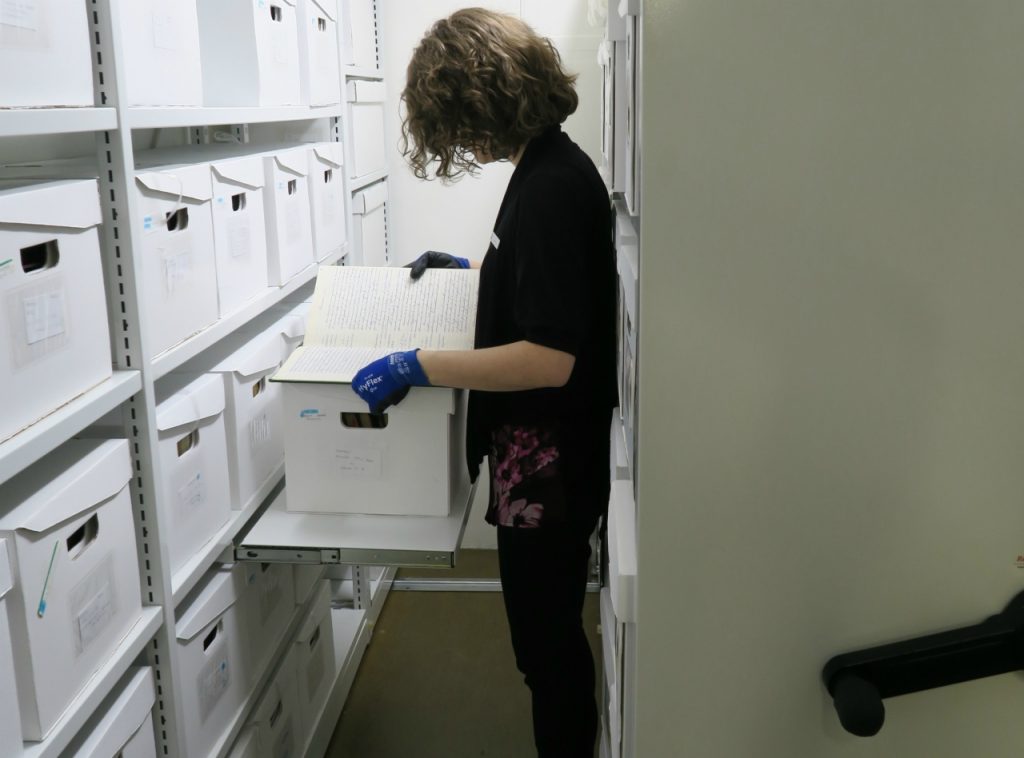
Space optimization and custom storage solutions at the Storage Facility
In the Museum Storage Facility, MAP financial assistance was used to install shelves at the bottom of each of the fixed shelving units, in order to keep collection pieces up off the floor. This helps prevent damage to items in the event of water flooding, while facilitating maintenance of the premises.
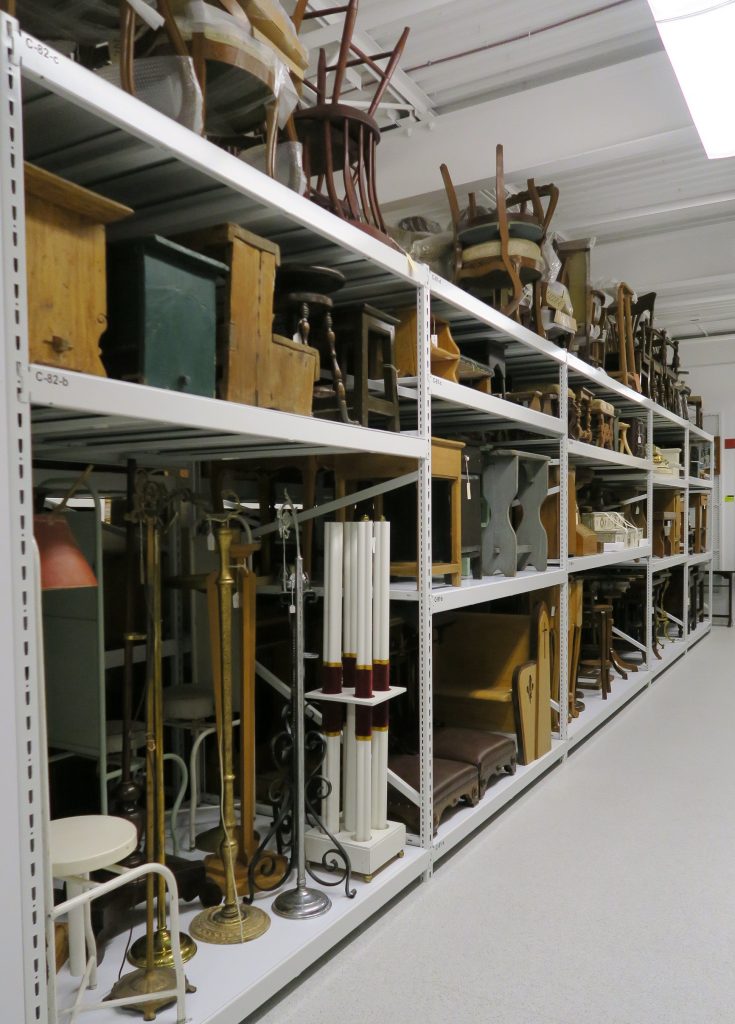
The acquisition of conservation equipment that made it possible to manufacture storage solutions adapted to fragile items in the collection. Such is the case for works on paper drawn in pencil or charcoal. Unlike engravings, which can simply be stored in acid-free paper bags, the surface of these works on paper should not come into contact with other materials, in order to prevent the medium from transferring to another (charcoal is a good example). In this case, members of the collections team made blue-gray acid-free cardboard trays. The edges of these trays are strong enough so that several of them can be superimposed without any contact occurring between the work and the upper tray. The trays are then placed in fluted plastic boxes (Coroplast ©) and stored on the shelves in the Museum Storage Facility.
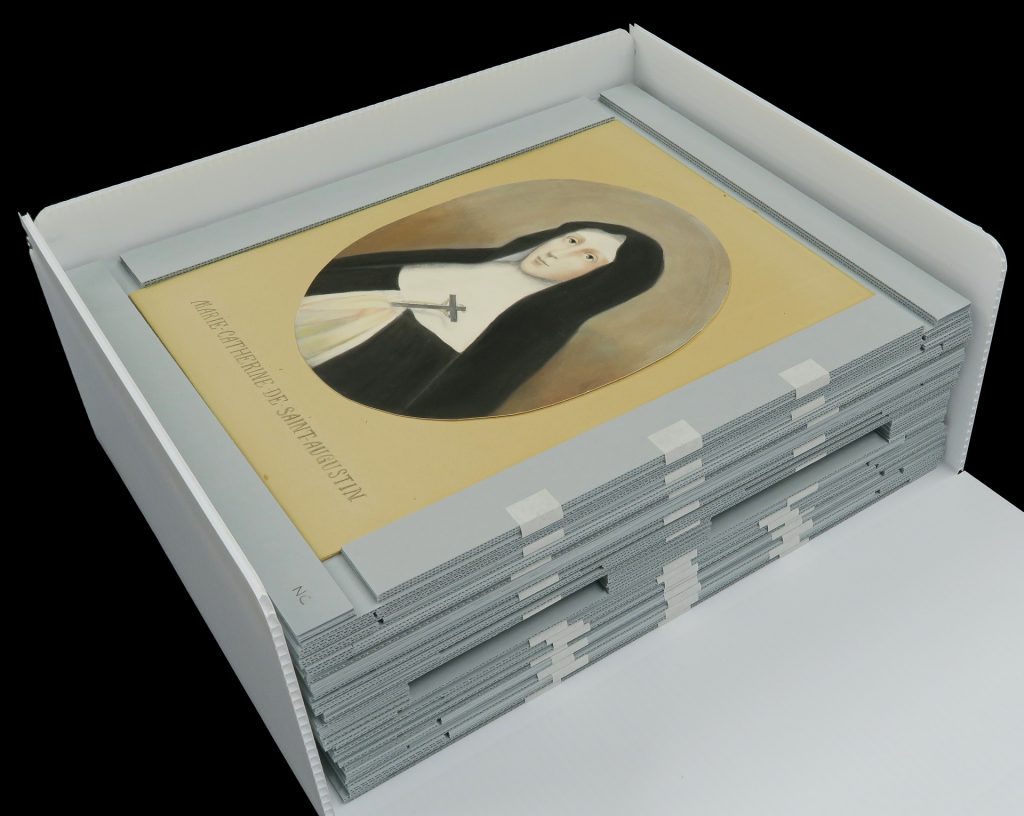
The silverware sets have also been treated to minimize the impact of airborne pollutants and to prolong their preservation. Fluted plastic storage boxes have been made to optimize storage of silver trays. These were inserted into Pacific Silvercloth© covers, a textile specially designed to preserve silver. The items were then packaged in polyethylene pouches in which silica gel sachets were inserted. Silver tea sets (teapots, cream pots, milk pots and sugar bowls) have been stored in custom-designed compartments.
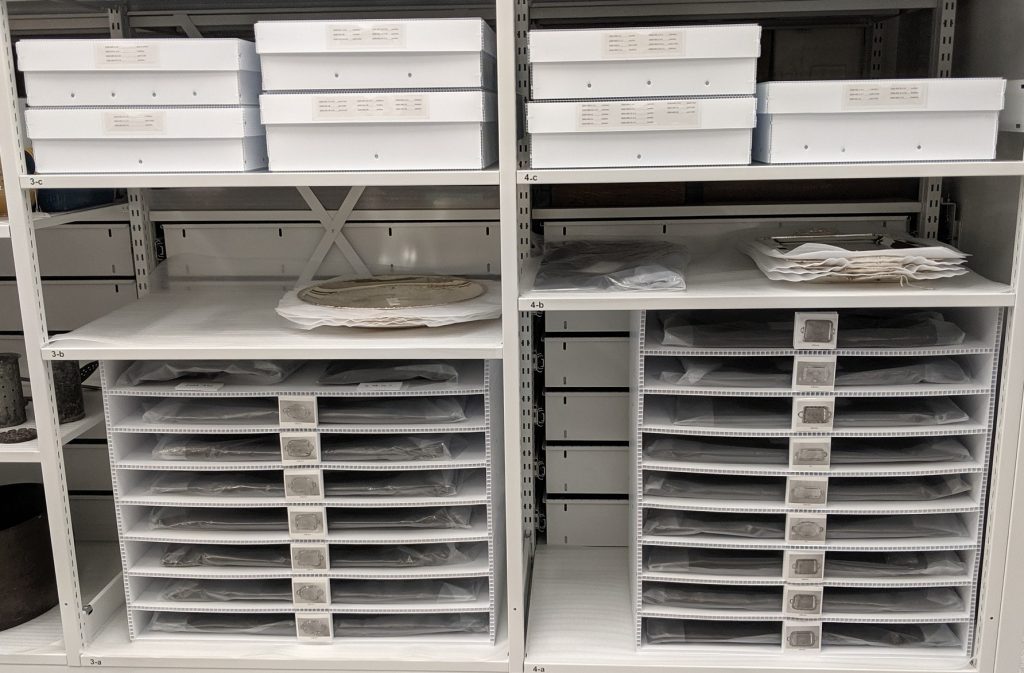
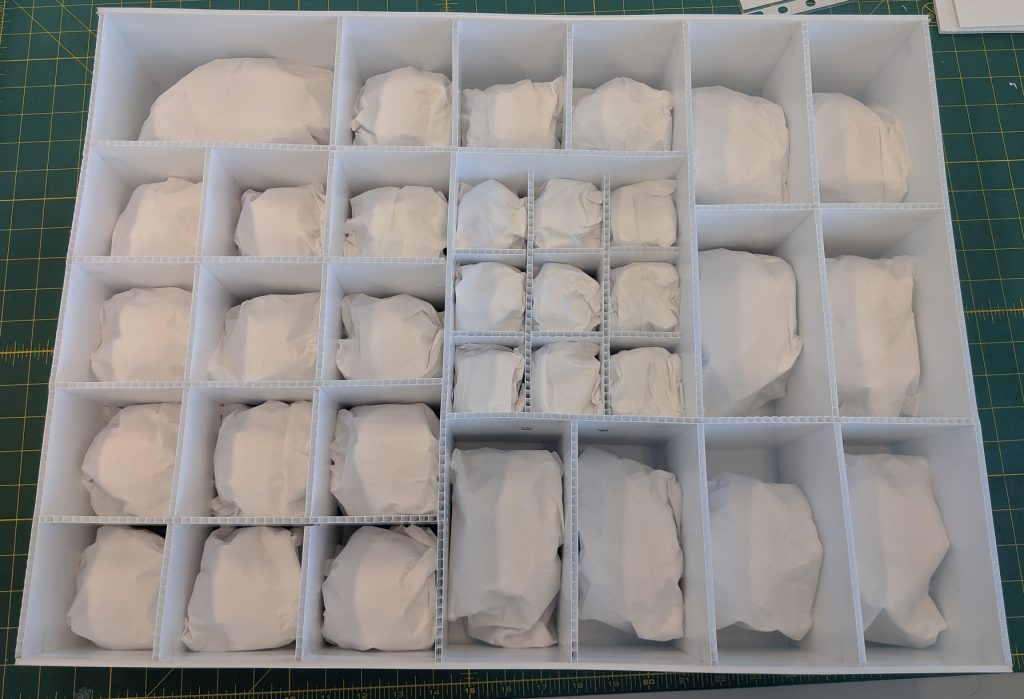
Improvements to sustain the heritage
Thanks to the support of the Museums Assistance Program, these numerous improvements made it possible to consolidate collections and archives from the 12 monasteries founded by the Augustinians in province of Quebec, while ensuring adequate and standardized storage conditions for the items, old books and stored archives.
While making these improvements, the Collections and Archives team welcomed visitors and researchers from institutions related to conservation and museology, as well as many religious communities. These professional exchanges have stimulated the sharing of knowledge and expertise in preventive conservation.
This optimization work will undoubtedly ensure the long-term survival of the exceptional legacy bequeathed by the Augustinian Sisters, so that future generations may also benefit from it.
Ariane Blanchet-Robitaille
Curator
Sara Bélanger
Historian-archivist Manager

